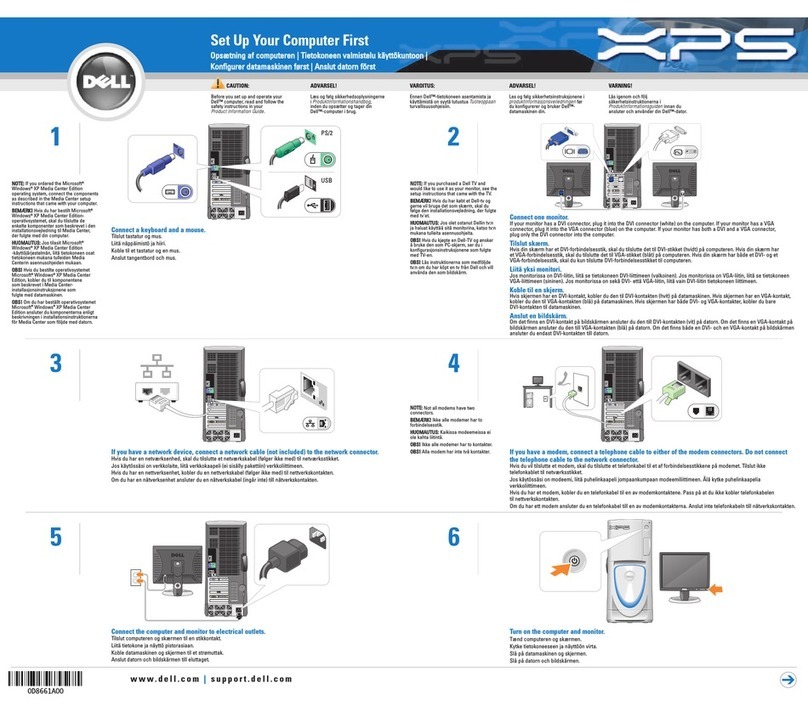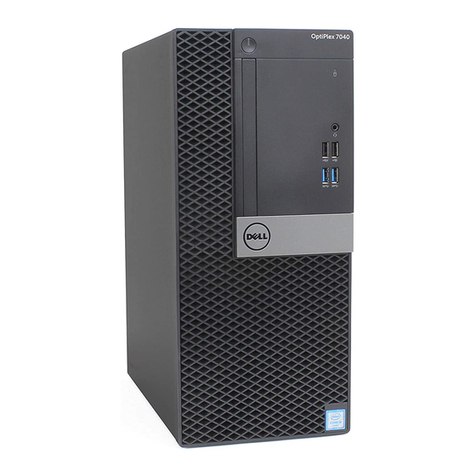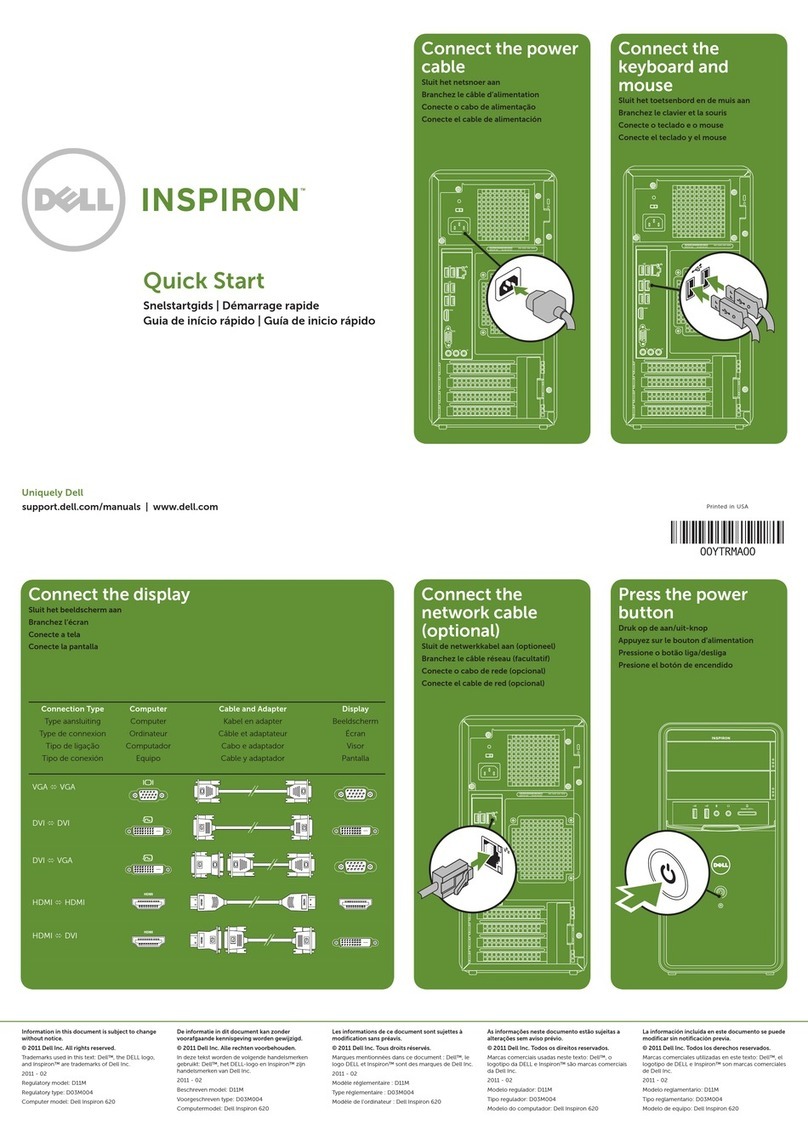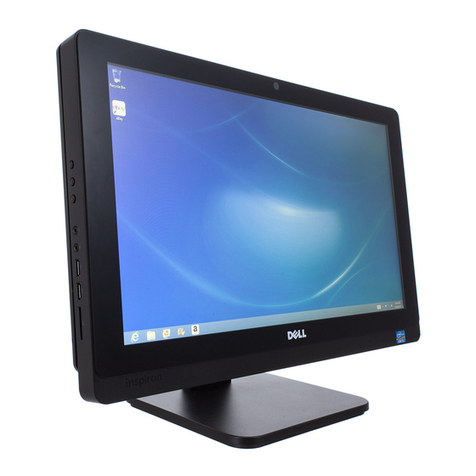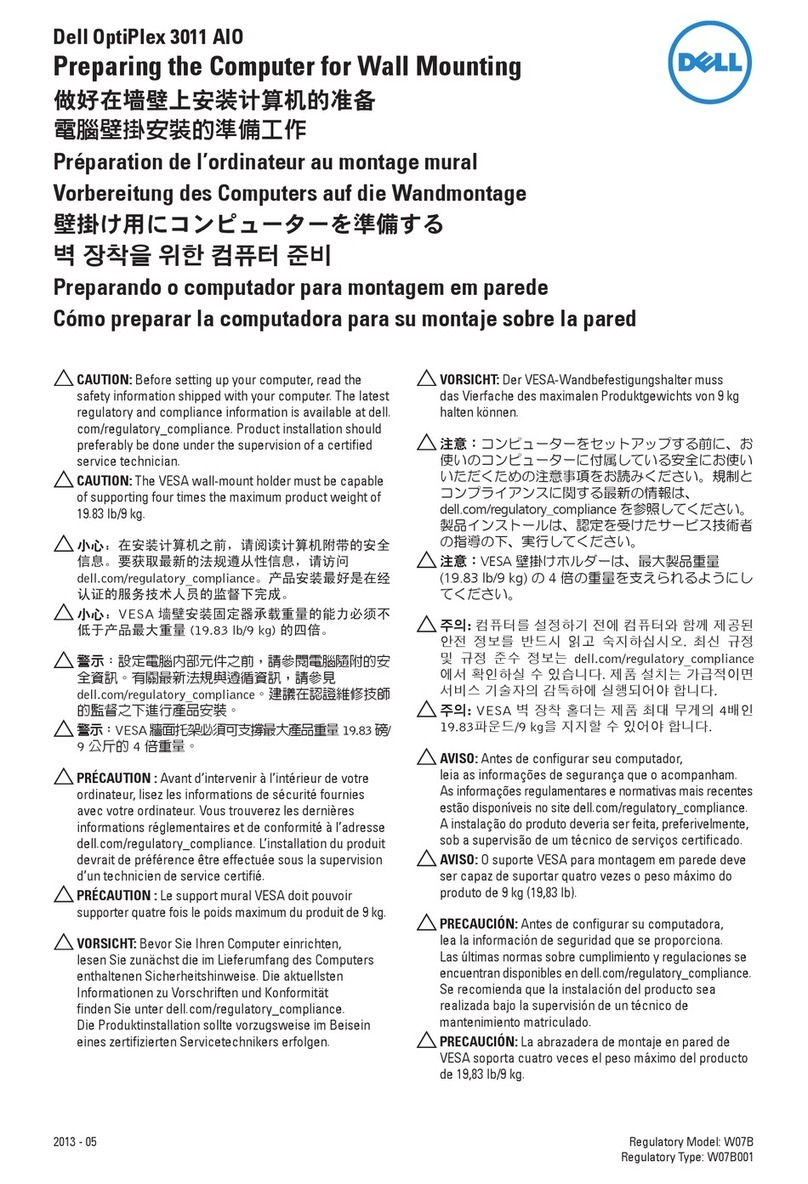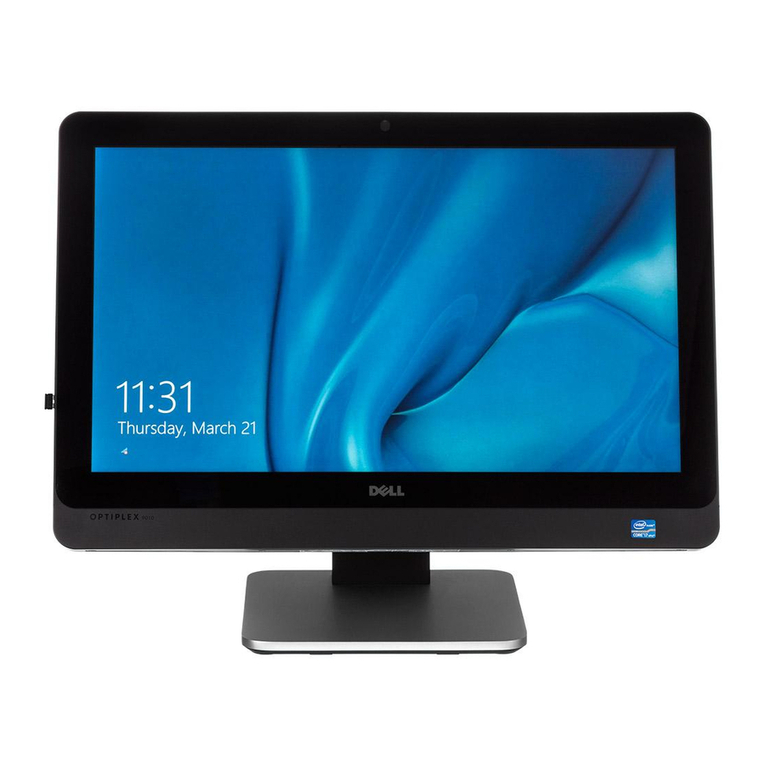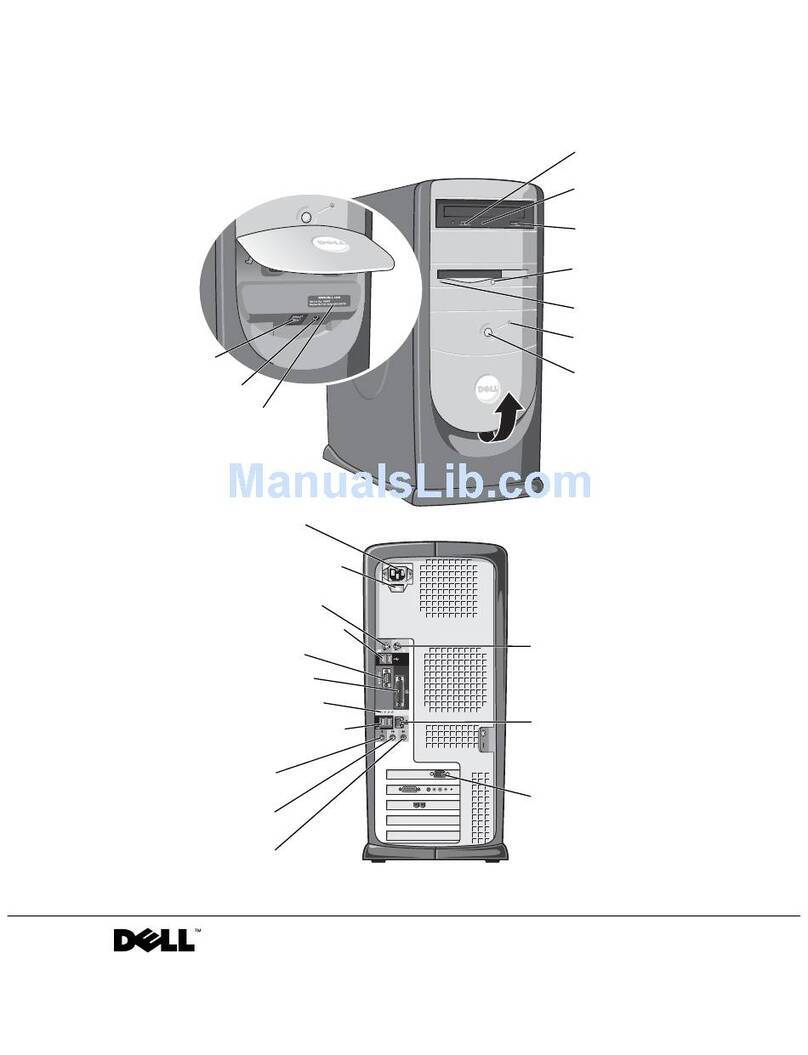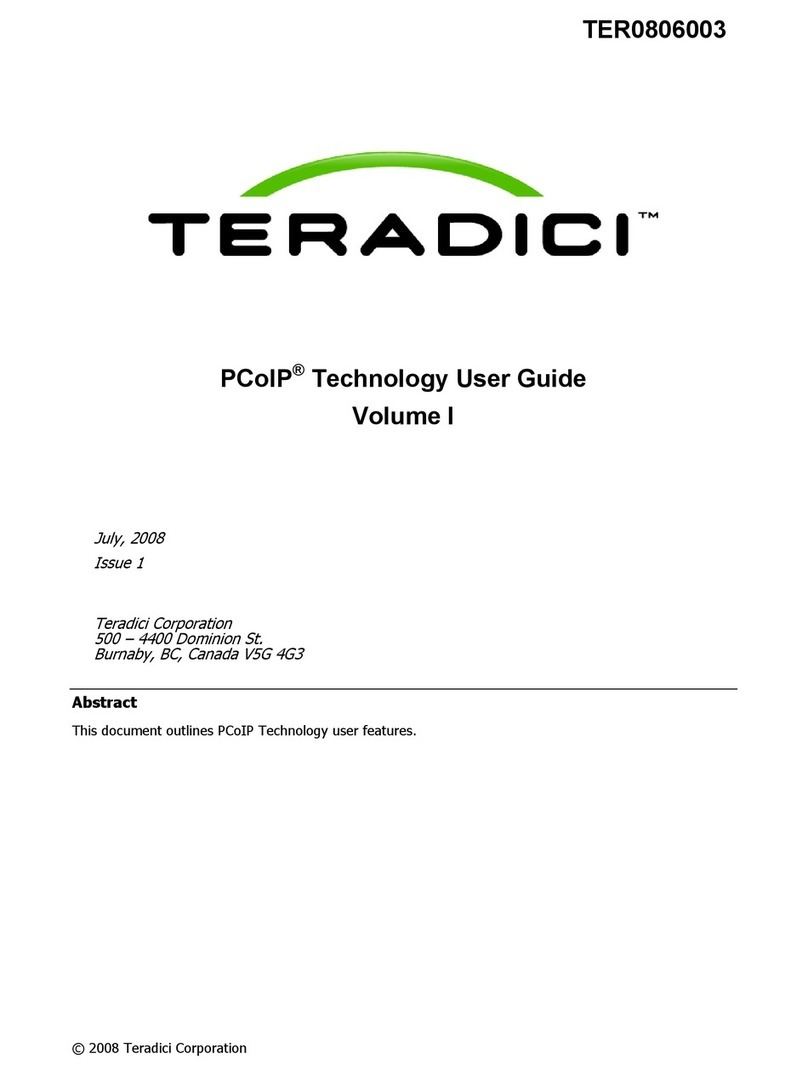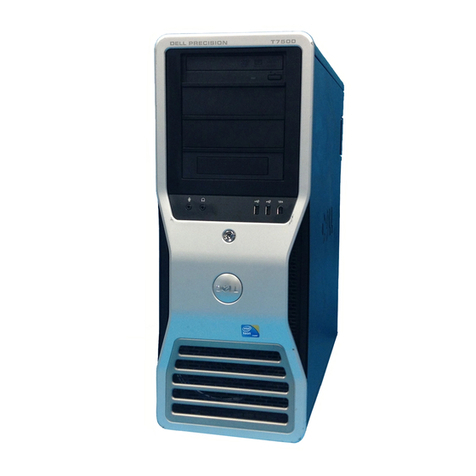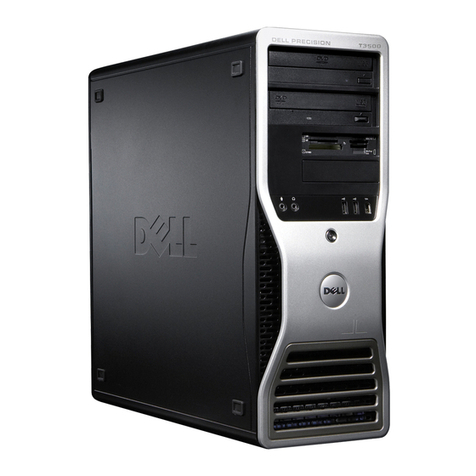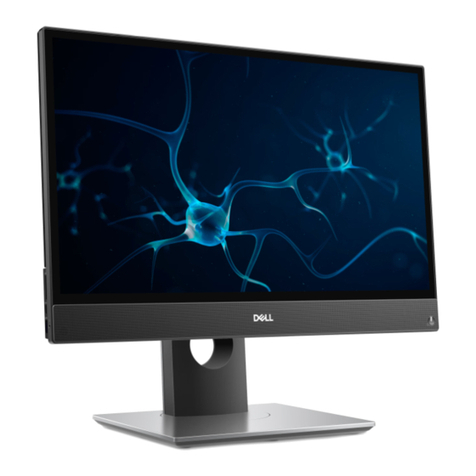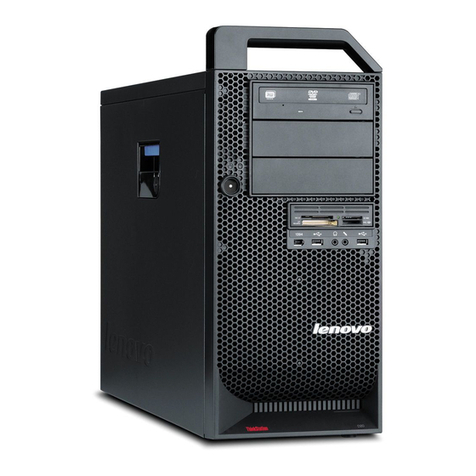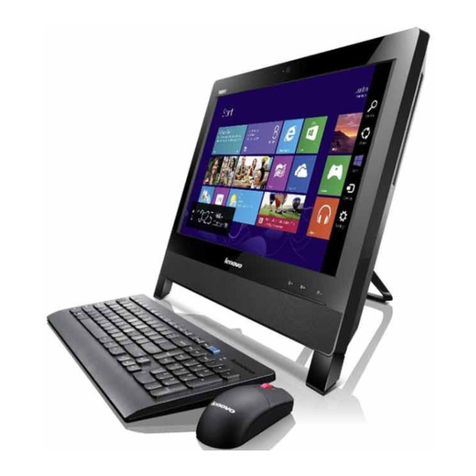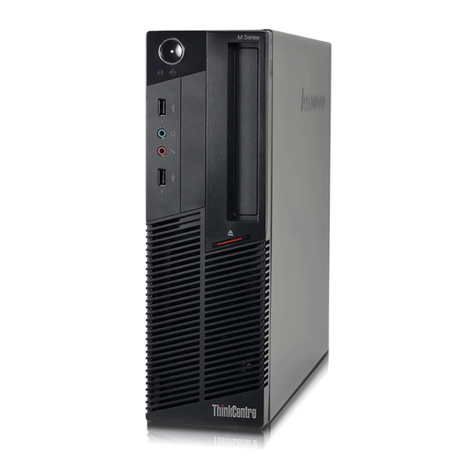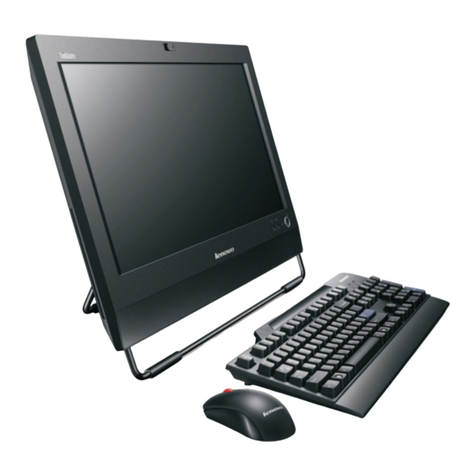
v
Safety Instructions
U
se the following safety guidelines to help protect
your computer system from potential damage and to
ensure your own personal safety.
W
hen Using Your Computer
System
As you use your computer system, observe the following
safety guidelines:
•To help avoid damaging your computer, only plug
your computer into a 115-volt (V)/60-hertz (Hz) or
230-V/50-Hz AC power source.
Also be sure your monitor and attached peripherals
are electrically rated to operate with the AC power
available in your location.
•To help prevent electric shock, plug the computer
and peripheral power cables into properly grounded
power sources. These cables are equipped with
three-prong plugs to help ensure proper grounding.
Do not use adapter plugs or remove the grounding
prong from a cable. If you must use an extension
cable, use a three-wire cable with properly grounded
plugs.
•To help protect your computer system from sudden,
transient increases and decreases in electrical power,
use a surge suppressor, line conditioner, or un-
interruptible power supply (UPS).
•Be sure nothing rests on your computer system’s
cables and that the cables are not located where they
can be stepped on or tripped over.
•Do not spill food or liquids on your computer. If the
computer gets wet, call your network administrator.
•Do not push any objects into the openings of your
computer. Doing so can cause fire or electric shock
by shorting out interior components.
•Keep your computer away from radiators and heat
sources. Also, do not block cooling vents. Avoid
placing loose papers underneath your computer, and
do not place your computer in a closed-in wall unit
or on a bed, sofa, or rug.
E
rgonomic Computing Habits
For comfort and efficiency, observe the following ergo-
nomic guidelines when setting up and using your
computer system:
•Position your system so that the monitor and key-
board are directly in front of you as you work.
Special shelves are available (from Dell and other
sources) to help you correctly position your
keyboard.
•Set the monitor at a comfortable viewing distance
(usually 510 to 610 millimeters [20 to 24 inches]
from your eyes).
•Make sure the monitor screen is at eye level or
slightly lower when you are sitting in front of the
monitor.
CAUTION: Only authorized service technicians
and qualified network administrators should
remove the computer cover and access any of the
components inside the computer. Do not attempt to
service the computer system yourself.
WARNING: Improper or prolonged keyboard use
may result in injury.
